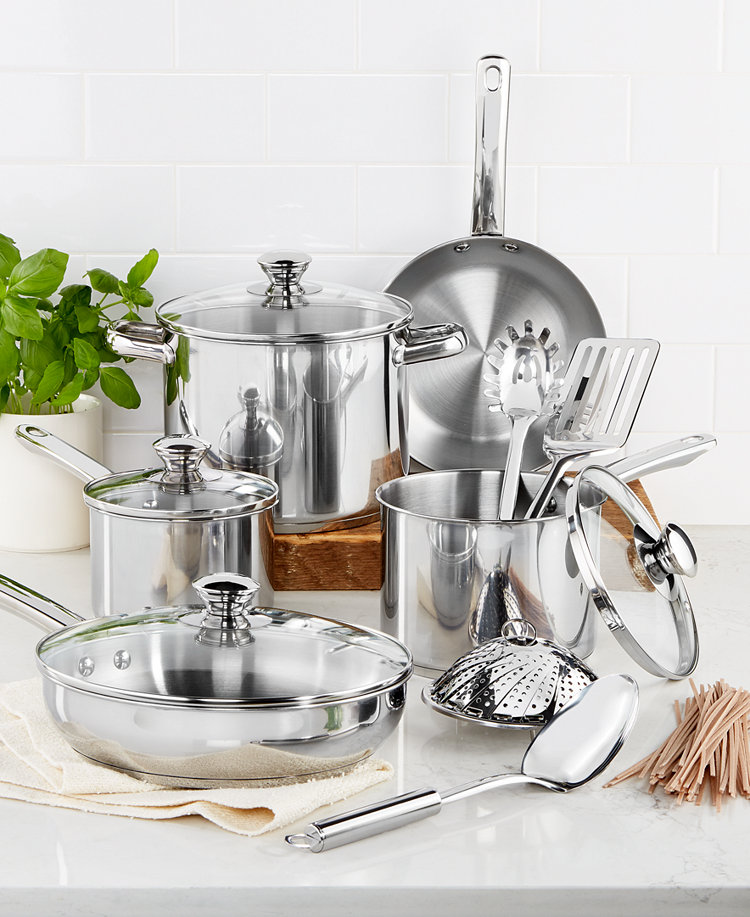Sedona 3-Pc. Stainless Steel Stock Pots with Lids & Reviews – Cookware – Kitchen – Macy’s
Outfit your kitchen with this set of mirror-finished stainless steel stock pots from Sedona in the ideal sizes needed for a variety of meals and dishes.
Outfit your kitchen with this set of mirror-finished stainless steel stock pots from Sedona in the ideal sizes needed for a variety of meals and dishes. Designed for superior cooking performance, each includes a self-sealing glass lid.
- Set includes:
- 8-qt. stock pot with lid
- 12-qt. stock pot with lid
- 16-qt. stock pot with lid
- Encapsulated base provides quick and even heating without hot spots
- Striking, mirror-polished exteriors
- Glass lids seal in moisture while letting you watch cooking progress
- Stay-cool, ergonomic handles are riveted directly to the pan
- Use: Compatible with gas, electric, ceramic and glass cooktops; Not oven safe
- Manufacturer’s 30-day limited warranty
- Stainless steel/glass
- Hand wash
- Imported






by Sam
what a bargain , great value and easy to clean. love it!!!
by Shekara
I have a large family and it is continually growing now with grandbabies. These pots were an awesome deal and we use them all the time,